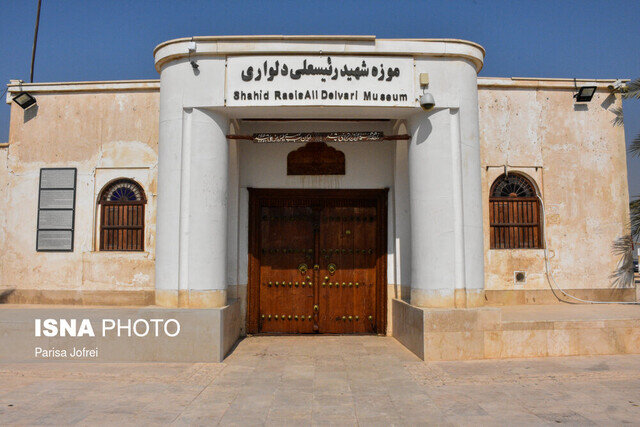Delvari Museum to be restored to former glory

TEHRAN – Ra’is Ali Delvari Museum, which displays personal belongings and weapons of the anti-colonial hero in the southern Bushehr province, is planned to undergo some rehabilitation works, the provincial tourism chief has said.
The restoration of the museum will begin soon after a 16-year hiatus, Esmaeil Sajjadi-Manesh explained on Friday.
The Iranian independent fighter, who organized popular resistance against the British troops, was martyred in 1915 at the age of 33 in a fierce clash with British aggressors in Bushehr.
Though Persia (Iran) declared the state of neutrality in World War I, it became divided into northern and southern spheres of influence under the Anglo-Russian Treaty of 1907 as the country was deemed a great source of interest due to its significant oil reserve and strategic geography.
The treaty, however, was widely viewed by Iranians as having made the nation into nothing more than a British and Russian protectorate, so countless local uprisings occurred against the British and Russian forces from the north to the south.
In northern Iran, the Jangal Movement of Gilan was the main indigenous resistance against the foreign occupiers, and in southern parts, Tangistani amongst other tribes constituted the main resisting power against the British Empire.
On the eve of World War I, Germany established the Intelligence Bureau for the East for the Central Powers, intending to promote and sustain anti-colonial movements and nationalist agitations in British India, Persia, and Egypt. Wilhelm Wassmuss led the bureau’s operations in Persia, seeking the goal to free Persia from the Allied Powers’ influence and to create a wedge between Russia and the British forces.
That was the time when Delvari, with the help of Wassmuss, was formulating a general Anti-British uprising in Iran. The Iranian hero was, ultimately, killed by Anglo-Indian forces following months of bloody clashes.
With over 6,000 years of history and significant monuments from the Elamite, Achaemenid, Parthian, and Sassanid eras, Bushehr is one of Iran’s most important historical centers.
Besides its cultural heritage, beautiful beaches and lush palm groves make it an attractive destination for world travelers.
The historical and architectural monuments of Bushehr include Islamic buildings like mosques and praying centers, mansions, old towers, castles, as well as gardens.
When it comes to cultural attractions, there are many historical mounds in Bushehr including Tall-e Khandaq with Sassanid architectural style, Tall-e Marv located near an Achaemenid Palace, and Qajar era Malek al-Tojar Mansion. Qajar era Kazeruni Mansion, which has been inscribed on the World Heritage List, is another attraction that world travelers love to see among various ancient sites.
ABU/AM
